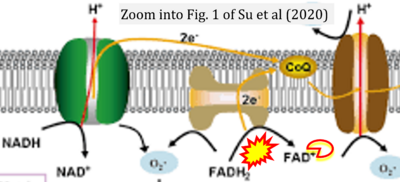Su 2020 Mol Biol Rep
| Su J, Ye D, Gao C, Huang Q, Gui D (2020) Mechanism of progression of diabetic kidney disease mediated by podocyte mitochondrial injury. Mol Biol Rep 47:8023-35. https://doi.org/10.1007/s11033-020-05749-0 |
Su J, Ye D, Gao C, Huang Q, Gui D (2020) Mol Biol Rep
Abstract: Diabetic kidney disease (DKD) is an important diabetic microvascular complication, which has become the main cause of end-stage renal disease (ESRD) all over the world. It is of great significance to find effective therapeutic targets and improve the prognosis of the disease. Traditionally, it is believed that the activation of the renin-angiotensin-aldosterone system (RAAS) is the main reason for the progression of DKD, but with the progress of research, it is known that the production of proteinuria in patients with DKD is also related to podocyte injury and loss. Many studies have shown that mitochondrial dysfunction in podocytes plays an important role in the occurrence and development of DKD, and oxidative stress is also the main pathway and common hub of diabetes to the occurrence and development of microvascular and macrovascular complications. Thus, the occurrence and progression of DKD is correlated with not only the activation of the RAAS, but also the damage of mitochondria, oxidative stress, and inflammatory mediators. Besides, diabetes-related metabolic disorders can also cause abnormalities in mitochondrial dynamics, autophagy and cellular signal transduction, which are intertwined in a complex way. Therefore, in this review, we mainly explore the mechanism and the latest research progress of podocyte mitochondria in DKD and summarize the main signal pathways involved in them. Thus, it provides feasible clinical application and future research suggestions for the prevention and treatment of DKD, which has important practical significance for the later treatment of patients with DKD.
Labels:
Correction: FADH2 and Complex II
- FADH2 is shown as the substrate feeding electrons into Complex II (CII). This is wrong and requires correction - for details see Gnaiger (2024).
- Gnaiger E (2024) Complex II ambiguities ― FADH2 in the electron transfer system. J Biol Chem 300:105470. https://doi.org/10.1016/j.jbc.2023.105470 - »Bioblast link«


